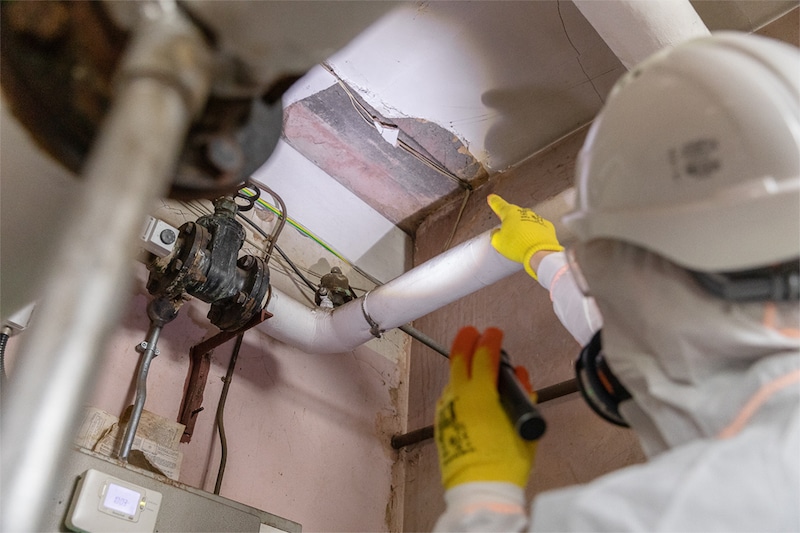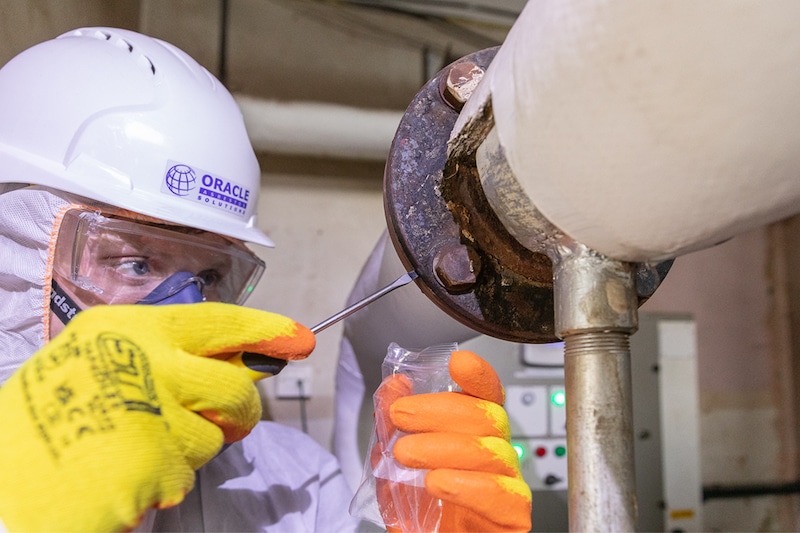The future of asbestos consultancy and surveying: trends and predictions for these jobs
The need for asbestos consultancy and surveying services in the present day ought to be easy enough for most informed observers to understand. Having been extensively used in industries such as shipbuilding and construction for the bulk of the 20th century, asbestos was only finally banned in all its forms in the UK towards the end of 1999.
As a consequence of such a long period of use, the legacy of asbestos use in the UK is a considerable one. Great numbers of commercial, residential, and public buildings up and down the country still contain the naturally occurring mineral. And where asbestos-containing materials (ACMs) do continue to be present in buildings, there is a need to proactively manage them and control the health risks that they could still potentially pose.
The use of asbestos has been so prevalent historically, covering almost any and every type of building, that it will realistically still be present in buildings in some form or another for years to come – potentially 100 years or longer.
But it is one thing to know how crucial asbestos management services are today, and quite another thing to assess what the future of this industry will look like. So, below, we decided to take a look at that very subject, and to make some predictions.
Persistence of asbestos in buildings
Despite the importation and use of asbestos in the UK having been banned more than two decades ago, it has been estimated that there could be as many as 1.5 million buildings in the UK that still contain potentially deadly asbestos fibres.
Indeed, in light of the extremely widespread use of asbestos during the period when it was legal, it can still be safely assumed that any building in the UK that was constructed prior to the year 2000 is likely to contain asbestos.
And wherever asbestos happens to be present, there will be a need for sensible and responsible management of that material. After all, the risk that a given piece of asbestos poses will not necessarily be static over its lifetime, given that deterioration of the material could heighten the risk of asbestos fibres being released, and subsequently breathed in by someone nearby.
Nor will it be possible to remove every single piece of asbestos material that has ever been used in a UK building, given that in some cases, such removal could put at risk the structural integrity of a building.
All of this means that asbestos consulting and surveying services will not become unnecessary at any time soon; indeed, we predict that they will actually heighten in importance.
Gradual decline in worst-case asbestos removal
Current UK law does not automatically require any and all asbestos to be removed from buildings in which it is found to be present. And the UK Health and Safety Executive (HSE)’s current stance is that, as long as asbestos is in good condition and has not been damaged or disturbed, it poses a negligible risk to human health.
For these reasons, many individuals and organisations that are responsible for the maintenance and repair of UK buildings that contain asbestos, choose to leave the material in place, and manage and monitor it over time.
In some cases, however, it is decided that certain ACMs pose too high a risk to be left in place. In these situations, the typical response is to remove the asbestos material from the given building altogether.
It stands to reason, then, that as time goes on, more and more asbestos is going to be removed from UK buildings. This will result in a gradual decline in removals of the worst-case instances of asbestos, leaving behind those cases where the risk posed by asbestos is likely to be much more moderate.
In the years to come, then, we can expect an increasing focus on the management and control of asbestos “in situ” where it is still present, and a deemphasis on removal.
A growing need for asbestos consulting and surveying
As the era in which asbestos was widely used in construction continues to recede into distant memory, so there will be a heightened need for building owners and managers to take steps to avoid complacency about the remaining asbestos risks.
Even in the 2020s, there continue to be around 5,000 deaths a year in the UK that are attributable to asbestos-related disease. And while the long latency period associated with asbestos exposure means many of these deaths will have arisen from instances of asbestos exposure pre-dating the 1999 ban, there are still people breathing in or ingesting asbestos fibres to this day.
So, we can safely predict that the demand for professional asbestos services might well increase, instead of declining. We can expect a need for efficient asbestos assessment and monitoring, with comprehensive asbestos risk assessments continuing to be sought after – particularly if it becomes less obvious to dutyholders where the remaining asbestos in their building might be present.
Asbestos risk management strategies are expected to become even more advanced over time as “legacy” asbestos materials in buildings degrade, and building owners and managers are compelled by regulation to take every possible step to minimise asbestos hazards.
Enhanced training and education
A key theme of life as an asbestos consultant or surveyor, is the importance of continuous professional development in the field. Regulation 10 of the UK’s Control of Asbestos Regulations 2012 (CAR 2012) sets out that adequate training must be provided to anyone who is liable to disturb asbestos during their work, or those supervising such workers.
It seems unlikely to us, however, that the situation surrounding training and education in the asbestos industry will remain exactly the same as it is right now.
Indeed, we anticipate the emergence of increasingly specialised training programmes for asbestos consultants and surveyors, to help give these professionals an even more sophisticated appreciation of the factors that impact on asbestos risk, and the best measures for tackling these risks.
Evolving regulations and compliance
One of the reasons why asbestos consultants and surveyors will need to take an approach to their education and training that emphasises ongoing professional development, rather than a “once and done” approach, is the near certainty that asbestos regulations in the UK will continue to evolve.
As things stand, there is various legislation that is of potential relevance to those managing and maintaining UK buildings. Not least among these is CAR 2012, which puts in place a “duty to manage” asbestos – including taking reasonable steps to determine whether asbestos is present in a given premises, and preparing a plan for the management of such materials.
As time goes on, however, we expect regulations regarding asbestos control and management to become even stricter. It will therefore be necessary for asbestos consultants and surveyors to stay continually up to date with the changing compliance requirements.
The process of asbestos management has always made it crucial for various stakeholders – such as building owners, asbestos professionals, and health organisations – to work closely together. The importance of such collaboration will not fade amid the continuing diversity and complexity of asbestos risks, and might even increase.
It is probable, too, that asbestos surveyors and consultants will take on an even more prominent role in raising public awareness about asbestos risks and safety practices. This is likely to become particularly important as more and more people are required to manage asbestos that was installed long before these individuals even entered the working world.
The cultural memory of the era of active asbestos use in buildings will recede with the passing of the older generations. However, the importance of remembering this era, and putting in place responsible practices for managing the ongoing risks, will certainly not decrease.
The world of asbestos management will continue evolving for years to come
With asbestos having first been commercially mined in the mid-19th century, and especially heavily used in UK buildings from around the 1950s to the 1980s, it is safe to say the lethal substance has had an extremely long-lasting presence in brick-and-mortar premises.
Such an extended legacy – combined with the fact that much remaining asbestos in UK buildings continues to be managed in place, instead of being removed – means there will be a persistent strong need for asbestos consulting and surveying services.
If you are reading this as an asbestos professional yourself, you should treat this article as a “call to action” to remain vigilant and to continue to adapt, innovate, and contribute to the safest possible asbestos management practices, as requirements and expectations evolve over time.
As for if you are a dutyholder for a given non-domestic premises in the UK and you are on the lookout for asbestos services, our team at Oracle Solutions can help. Please don’t hesitate to send us an email or to call the Oracle team today to request your free and fast asbestos quote.

Written by Brendan Coleman
Brendan Coleman, with decades of experience in the asbestos industry, is a dedicated Quality Manager. Certified as a surveyor and analyst, he is adept in operations and quality management with a keen focus on HSE compliance. His expertise is pivotal in maintaining high safety and efficiency standards. Brendan ensures our UKAS accreditation requirements are consistently met and exceeded, upholding stringent standards in asbestos remediation. His commitment to enhancing quality and customer satisfaction makes him an essential advisor in asbestos management.


